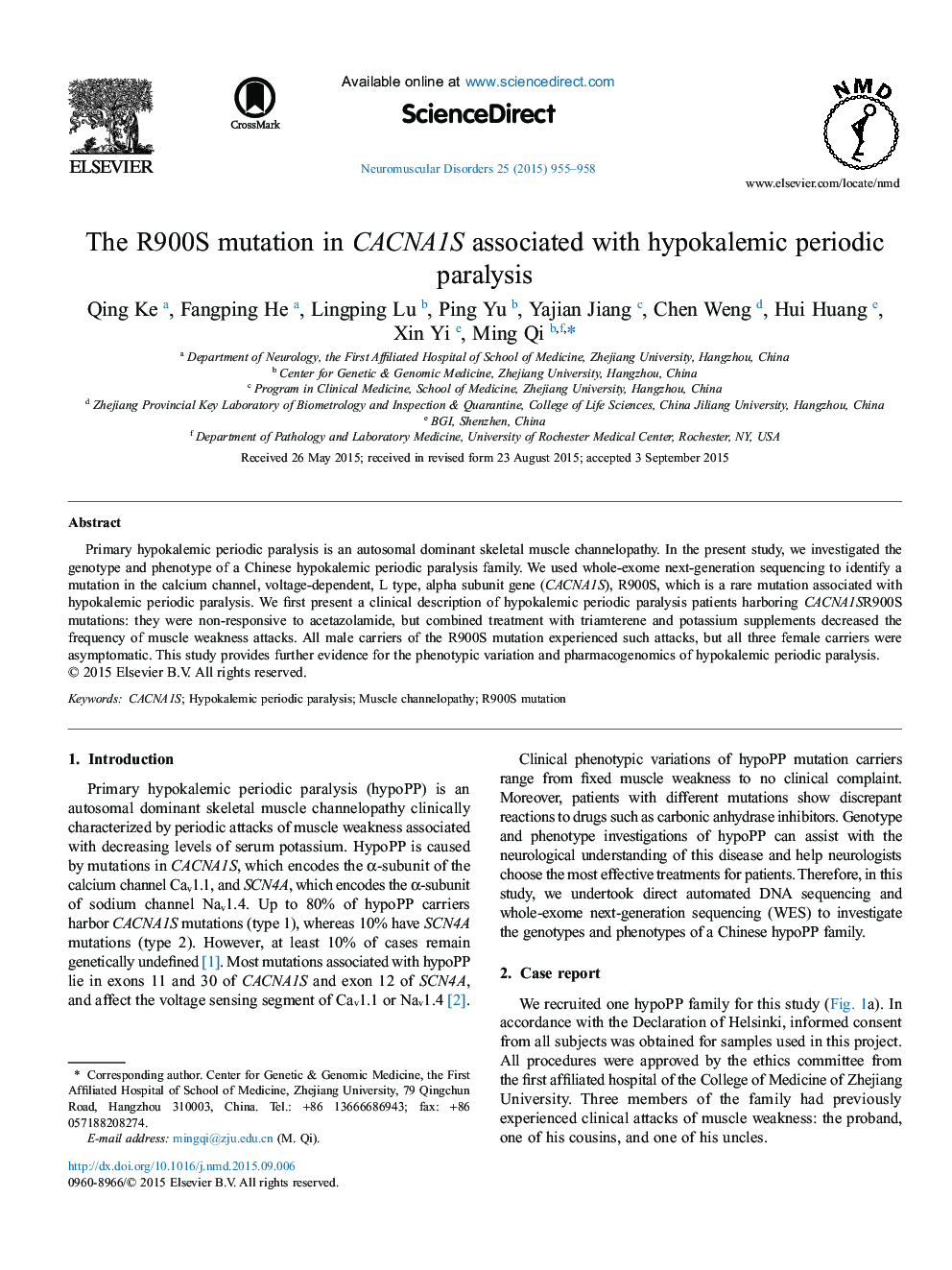| Article ID | Journal | Published Year | Pages | File Type |
|---|---|---|---|---|
| 6041353 | Neuromuscular Disorders | 2015 | 4 Pages |
â¢We found the CACNA1S R900S mutation in hypokalemic periodic paralysis (hypoPP).â¢Whole-exome next-generation sequencing is an alternative method for hypoPP.â¢Patients with CACNA1S R900S mutation were non-responsive to acetazolamide.â¢CACNA1S R900S mutation carriers have different penetrance in males and females.
Primary hypokalemic periodic paralysis is an autosomal dominant skeletal muscle channelopathy. In the present study, we investigated the genotype and phenotype of a Chinese hypokalemic periodic paralysis family. We used whole-exome next-generation sequencing to identify a mutation in the calcium channel, voltage-dependent, L type, alpha subunit gene (CACNA1S), R900S, which is a rare mutation associated with hypokalemic periodic paralysis. We first present a clinical description of hypokalemic periodic paralysis patients harboring CACNA1SR900S mutations: they were non-responsive to acetazolamide, but combined treatment with triamterene and potassium supplements decreased the frequency of muscle weakness attacks. All male carriers of the R900S mutation experienced such attacks, but all three female carriers were asymptomatic. This study provides further evidence for the phenotypic variation and pharmacogenomics of hypokalemic periodic paralysis.
